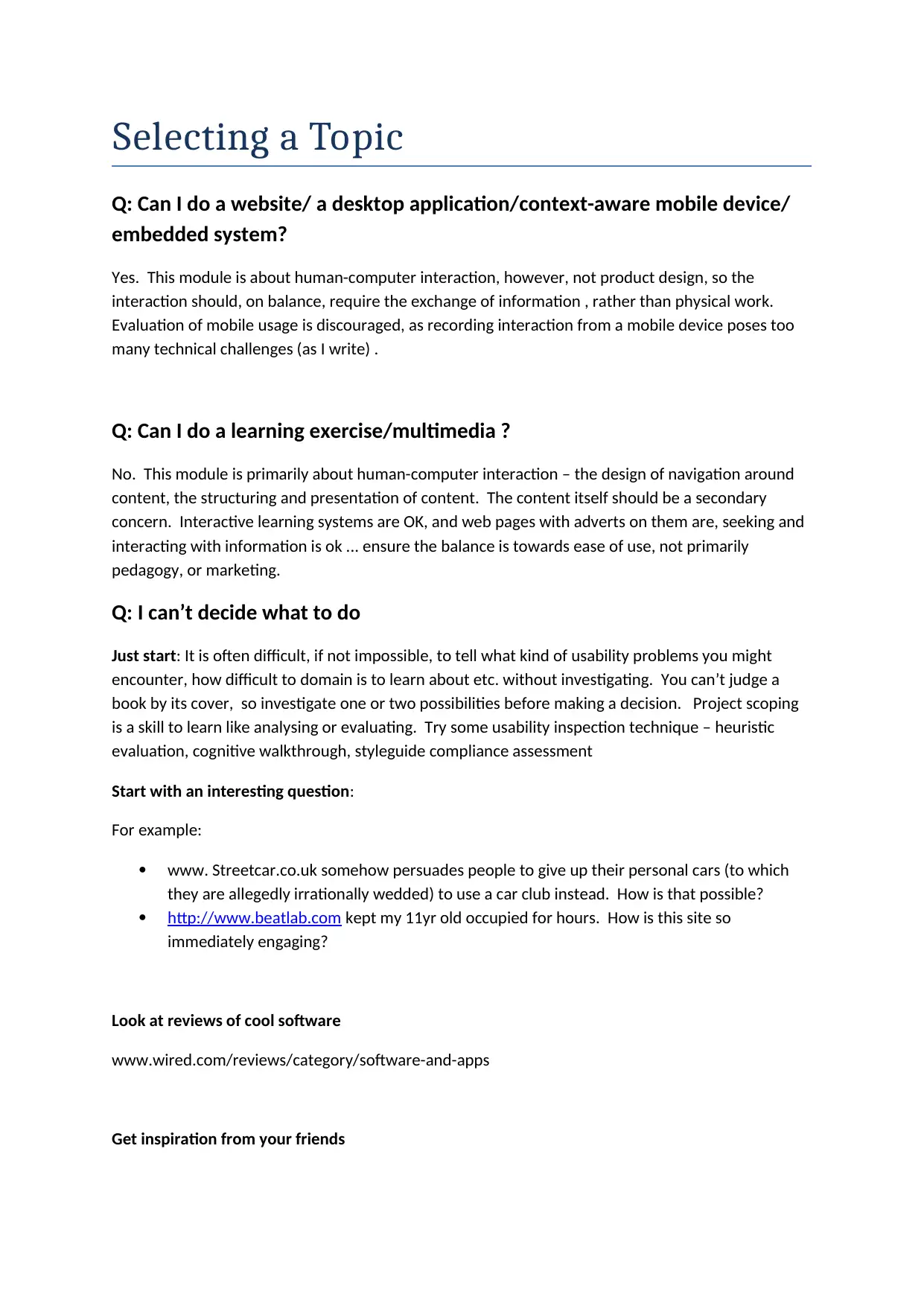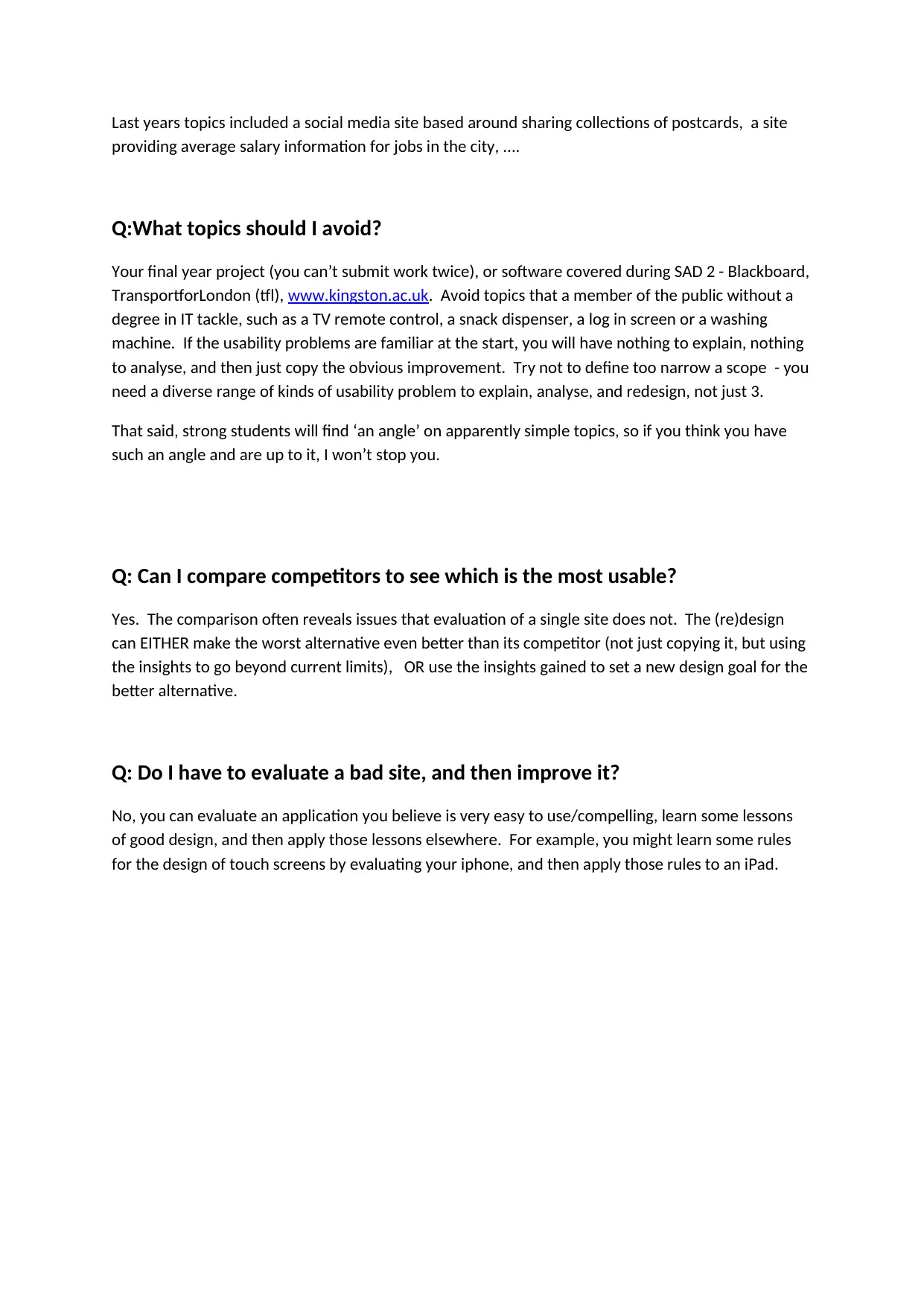Human-Computer Interaction Project: Topic Selection and Analysis
VerifiedAdded on 2019/09/20
|2
|678
|316
Homework Assignment
AI Summary
This assignment provides detailed guidelines for selecting a topic for a Human-Computer Interaction (HCI) project. It outlines the scope of acceptable projects, including websites, desktop applications, and context-aware mobile devices, while discouraging topics focused on mobile device evaluation due to technical challenges. The document emphasizes the importance of interaction design and usability, rather than the content itself. It offers advice on starting the project, exploring different possibilities, and using usability inspection techniques such as heuristic evaluation. The assignment also specifies topics to avoid, such as final year projects and overly simple interfaces, and encourages students to compare competitors to identify usability issues. The goal is to help students analyze and redesign interfaces, applying lessons learned from good design to create more usable and engaging systems. This resource is designed to assist students in understanding the nuances of HCI project selection and execution.
1 out of 2


![[object Object]](/_next/static/media/star-bottom.7253800d.svg)